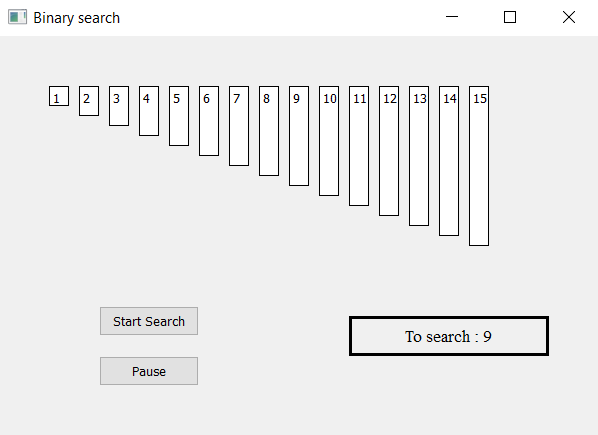PyQt5 – 心跳和呼吸计算器
在这篇文章中,我们将看到如何使用PyQt5创建一个心跳和呼吸的计算器。以下是该计算器的外观。

成人的正常静息 心率 在每分钟60到100次之间。一般来说,休息时的心率越低,意味着心脏功能越有效,心血管功能越强。例如,一个训练有素的运动员的正常静息心率可能接近每分钟40次。
呼吸频率:一个 人的呼吸频率是你每分钟的呼吸次数。一个成年人在休息时的正常呼吸率是每分钟12至20次。休息时的呼吸率低于12次或超过25次被认为是不正常的。
GUI实施步骤:
1.创建一个标题标签,显示计算器的名称
2.创建标签以显示用户选择出生日期和出生时间
3.创建一个QCalendarWidget对象让用户选择出生日期
4.创建一个QTimeEdit对象来获取出生时间
5.创建一个按钮来计算心跳和呼吸
6.创建一个标签来显示计算出的心跳和呼吸
后端实现:
1.使日历成为未来日期块,即把当前日期设为最大日期
2.给按钮添加动作
3.在按钮动作中,从日历中获取日期,从QTimeEdit中获取时间
4.从日期中获取日、月和年,从时间编辑中获取小时和分钟
5.为当前日期和出生日期创建一个数据时间对象
6.从两个日期中获取差值,并得到日和秒
7.将日和秒转换成分钟
8.通过将分钟与平均速率相乘得到心跳和呼吸。
9.在标签的帮助下显示计算出的心跳和呼吸
以下是实施方案
# importing libraries
from PyQt5.QtWidgets import *
from PyQt5 import QtCore, QtGui
from PyQt5.QtGui import *
from PyQt5.QtCore import *
import datetime
import sys
class Window(QMainWindow):
def __init__(self):
super().__init__()
# setting title
self.setWindowTitle("Python ")
# width of window
self.w_width = 400
# height of window
self.w_height = 550
# setting geometry
self.setGeometry(100, 100, self.w_width, self.w_height)
# calling method
self.UiComponents()
# showing all the widgets
self.show()
# method for components
def UiComponents(self):
# creating head label
head = QLabel("Beats and Breaths Calculator", self)
head.setWordWrap(True)
# setting geometry to the head
head.setGeometry(0, 10, 400, 60)
# font
font = QFont('Times', 15)
font.setBold(True)
font.setItalic(True)
font.setUnderline(True)
# setting font to the head
head.setFont(font)
# setting alignment of the head
head.setAlignment(Qt.AlignCenter)
# setting color effect to the head
color = QGraphicsColorizeEffect(self)
color.setColor(Qt.darkCyan)
head.setGraphicsEffect(color)
# creating a label
b_label = QLabel("Select Birthday and Time", self)
# setting properties label
b_label.setAlignment(Qt.AlignCenter)
b_label.setGeometry(50, 95, 300, 25)
b_label.setStyleSheet("QLabel"
"{"
"border : 1px solid black;"
"background : rgba(70, 70, 70, 25);"
"}")
b_label.setFont(QFont('Times', 9))
# creating a calendar widget to select the date
self.calendar = QCalendarWidget(self)
# setting geometry of the calendar
self.calendar.setGeometry(50, 120, 300, 180)
# setting font to the calendar
self.calendar.setFont(QFont('Times', 6))
# getting current date
date = QDate.currentDate()
# blocking future dates
self.calendar.setMaximumDate(date)
# creating a time edit object to receive time
self.time = QTimeEdit(self)
# setting properties to the time
self.time.setGeometry(50, 300, 300, 30)
self.time.setAlignment(Qt.AlignCenter)
self.time.setFont(QFont('Times', 9))
# creating a push button
calculate = QPushButton("Calculate", self)
# setting geometry to the push button
calculate.setGeometry(125, 360, 150, 40)
# adding action to the calculate button
calculate.clicked.connect(self.calculate_action)
# creating a label to show percentile
self.result = QLabel(self)
# setting properties to result label
self.result.setAlignment(Qt.AlignCenter)
self.result.setGeometry(50, 420, 300, 110)
self.result.setWordWrap(True)
self.result.setStyleSheet("QLabel"
"{"
"border : 3px solid black;"
"background : white;"
"}")
self.result.setFont(QFont('Arial', 11))
def calculate_action(self):
# getting birth date day
birth = self.calendar.selectedDate()
# getting year and month day of birth day
birth_year = birth.year()
birth_month = birth.month()
birth_day = birth.day()
# getting time of from the time edit
time = self.time.time()
# getting hour and seconds
hour = time.hour()
minute = time.minute()
# getting today date
current = QDate.currentDate()
# getting year and month day of current day
current = datetime.datetime.now()
# converting date into date object
birth_date = datetime.datetime(birth_year, birth_month, birth_day, hour, minute, 0)
# getting difference in both the dates
difference = current - birth_date
# getting difference in days
days = difference.days
# setting seconds
seconds = difference.seconds
# converting days and seconds into minutes
minutes = seconds / 60 + days * 24 * 60
heartbeat = int(minutes * 65)
breath = int(minutes * 15)
# setting this value with the help of label
self.result.setText("You have taken " + str(breath) +
", and your heart has beat " + str(heartbeat) +
" times since you were born.")
# create pyqt5 app
App = QApplication(sys.argv)
# create the instance of our Window
window = Window()
# start the app
sys.exit(App.exec())
 极客教程
极客教程